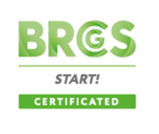Title Page
-
Site conducted
-
Conducted on
-
Prepared by
-
4.11.1, CLEANINESS OF PREMISES & EQUIPMENT: The premises and equipment shall be maintained in a clean and hygienic condition
-
What is the route cause?
-
3.11.2 DOCUMENTED CLEANING PROCEDURES: Does Walsh's have documented cleaning and disinfection procedures in place and maintained for the <br>building, plant and all equipment? Cleaning procedures for the processing equipment and food contact surfaces shall, at a minimum, include:<br>• responsibility for cleaning<br>• item/area to be cleaned<br>• frequency of cleaning<br>• method of cleaning, including dismantling equipment for cleaning purposes where required<br>• cleaning chemicals and concentrations<br>• cleaning materials to be used<br>• cleaning records (including records for completion and sign-off) and responsibility for verification.<br>The frequency and methods of cleaning shall be based on risk.<br>The procedures shall be implemented to ensure appropriate standards of cleaning are achieved.
-
What is the route cause?
-
4.11.4 TRAINING & RESOURCES: Are the resources for undertaking cleaning available? Where it is necessary to dismantle equipment for cleaning purposes or to enter large equipment for cleaning, this shall be appropriately scheduled and, where necessary, planned for non-production periods. <br>Cleaning staff shall be adequately trained or engineering support provided where access within equipment is required for cleaning.
-
What is the route cause?
-
4.11.5 CLEANING INSPECTION & SIGN OFF: Is the cleanliness of equipment checked before equipment is released back into production? The results of checks on cleaning, including visual, analytical and microbiological checks, shall be recorded and used to identify trends in cleaning performance and to instigate improvements where required.
-
What is the route cause?
-
4.11.6 CLEANING EQUIPMENT : I Is cleaning equipment :<br>• hygienically designed and fit for purpose<br>• suitably identified for intended use (e.g. colour-coded or labelled)<br>• cleaned and stored in a hygienic manner to prevent contamination
-
What is the route cause?
-
3.11.7 CLEANING IN PLACE: CIP is a method of cleaning the interior surfaces of pipes, vessels, process equipment, filters and associated fittings <br>without disassembly. There are various designs of CIP system, but they are often categorised as either of the following:<br>• single-use systems – where the CIP rinse solution is used and replaced with fresh solution<br>• re-use systems – the rinse solution is used and collected so that it can be re-used multiple times. Additionally, the system may be fully automated or semi-automated.<br>CIP equipment is specialist, and therefore operator training is important. See section 7.1 for information on training.
-
What is the route cause?
-
4.11.8 ENVIORNMENTAL MONITORING : Risk-based environmental monitoring programmes shall be in place for relevant pathogens or spoilage organisms. <br>At a minimum, these shall include all production areas with open and/or ready-to-eat products.
-
What is the route cause?
-
4.11.8.1 RISK BASE ENVIORNMENTAL MONITORING: The design of the environmental monitoring programme shall be based on risk, and at a <br>minimum include:<br>• sampling procedures<br>• identification of sample locations<br>• frequency of tests<br>• target organism(s) (e.g. pathogens, spoilage organisms and/or indicator organisms)<br>• test methods (e.g. settle plates, rapid testing and swabs)<br>• recording and evaluation of results.<br>The programme and its associated procedures shall be documented
-
What is the route cause?
-
4.11.8.2 CONTROL OR ACTION LIMITS Appropriate control or action limits shall be defined for the environmental monitoring programme.<br>The company shall document the corrective action to be taken when monitored results indicate a failure to meet a control limit, or when monitored results indicate an upward trend of positive results (i.e. a trend towards a control or action limit).
-
What is the route cause?
-
4.11.8.3 REVIEW F THE ENVIORNMENTAL MONITORING PROGRAMME: The company shall review the environmental monitoring programme at least annually and whenever there are:<br>• changes in processing conditions, process flow or equipment which could impact the environmental monitoring programme<br>• new developments in scientific information (e.g. new pathogens of concern)<br>• failures of the programme to identify a significant issue (e.g. regulatory authority tests identifying positive results which the site programme did not)<br>• product failures (products with positive tests)<br>• consistently negative results (e.g. a site with a long history of negative results should review its programme to consider whether the correct parts of the factory are being tested, whether the testing is being conducted correctly, whether the tests are for the appropriate <br>organisms, etc.).
-
What is the route cause?








